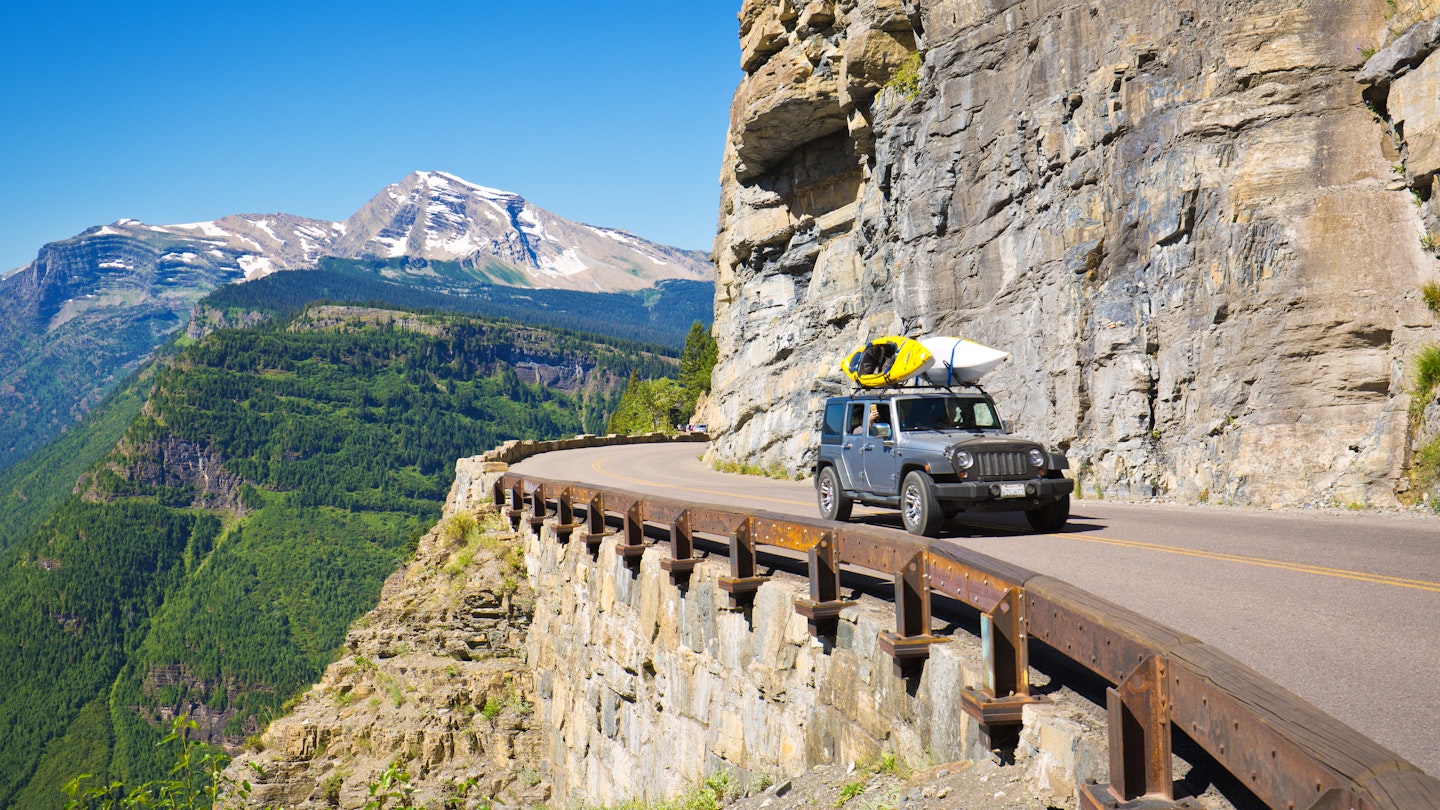Transportation Tips for Exploring Montana
In case you missed the memo, Montana is massive. It’s the largest landlocked state in the USA, taking at least 10 hours to drive from one side to the other, and a minimum of five hours to traverse its vertical span. However, while it’s one of the biggest states, it’s also one of the least populated. This results in limited public transportation options across the state.
Having a personal vehicle is the best way to explore Montana, allowing access to its many trailheads, river access points, and wild areas. Nevertheless, if you are based in a town or city, getting around without a car is feasible. Many bike-friendly base camps like Missoula, Bozeman, and Helena are exceptionally walkable and supported by public buses, bike rentals, and pedestrian-friendly paths.
Driving in Montana: The Open Road Awaits
Montana is perfect for road trips and van life, reflected in the demand and rental rates for cars. The state’s paved highways, byways, and scenic routes are generally very accessible, especially during summer. However, it’s important to note that cell phone reception may not always be reliable, so downloading offline maps is advisable.
When driving, be aware of mountain passes, river canyons, and rugged terrain, even on the major Interstates 90 and 15. Speed limits can reach up to 80 mph on rural stretches. Therefore, if you’re feeling anxious about navigating these roads, it’s best to stay in the right lane and remain focused on the drive.
Extra caution is necessary when driving on dirt and gravel roads, especially for reaching specific trailheads that may require all-wheel drive or high-clearance vehicles, which should not be attempted with standard rental cars. Always review vehicle restrictions from the Forest Service for your intended destinations.
If your travels take place in winter, be prepared for challenging conditions. Snowfall and icy temperatures can pose hazards. Keep an eye on weather forecasts to avoid traveling during storms, and consider using chains or renting a 4WD vehicle for mountain passes during winter months.
Electric Vehicle Charging Stations
While Montana is not a leader in electric vehicle (EV) infrastructure, its capabilities are improving steadily. There are over 100 charging stations throughout the state, primarily concentrated along the Interstate 90 corridor, including major cities like Billings, Bozeman, and Missoula. The Flathead Valley area, which includes Glacier National Park, also offers several charging locations.
Public Transportation Options in Montana
The state buses, while limited, offer significant connectivity between major cities. Services from companies like FlixBus and Greyhound cover essential routes, making bus travel a workable option for navigating Montana.
- The Flathead Valley route connecting Missoula and Whitefish operates efficiently with daily service, ensuring multiple convenient stops.
- Intrastate bus tickets in Montana are usually very affordable, rarely exceeding $100.
The Going-to-the-Sun Road Shuttle
Navigating the popular Going-to-the-Sun Road in Glacier National Park during the peak summer season can be tricky due to heavy visitor traffic, especially at Logan Pass, where parking is extremely limited. To mitigate congestion, a Vehicle Reservation System has been introduced by the National Park System during busy months.
However, a practical solution is taking the free Going-to-the-Sun Road Shuttle, which operates from July 1 through early September. This shuttle includes an express service directly to Logan Pass and stops at various points between Apgar Village and St. Mary Lake, operating on a first-come, first-served basis.

Train Travel: Amtrak’s Empire Builder Train
Traveling by train in Montana offers a unique perspective of the stunning landscape. The Amtrak Empire Builder Train covers the state’s northern region and provides beautiful views from its observation car. Whitefish serves as the key stop, giving access to Depot Park and the west entrance of Glacier National Park.
Amtrak serves 13 stops across northern Montana, connecting popular towns and reservations. Short intrastate fares range from $40 to $70, eliminating the need for a car during these scenic journeys.
Bikepacking adventures in Montana
If you’re an outdoor enthusiast, consider bringing your bicycle along on your travels. Bikes are an excellent means for exploring Montana’s cities, with many communities offering bike-friendly features. For instance, Missoula boasts incredible connections via the Clark Fork River Trail, Ron’s River Trail, and the Bitterroot Trail, all near downtown.
Missoula also houses the Adventure Cycling Association headquarters, which maintains an extensive network of bicycle touring and bikepacking routes, establishing it as a prime location for those in search of bicycle exploration.
Public Transit: Free or Low-Cost Options
Most of Montana’s major cities have affordable or even free public transportation options available. For example, the Streamline Bus in Bozeman and the Mountain Line in Missoula provide fare-free services, while cities like Helena and Billings offer low-fare day passes for their bus services. Smartphone navigation apps can be beneficial in planning your public transit journey effectively.
Winter Ski Shuttles
If skiing is your activity of choice, consider using the free or low-cost shuttles offered by several of the state’s top resorts. Bridger Bowl features a complimentary shuttle from Bozeman, while the S.N.O.W. Bus services Whitefish Ski Resort and a low-cost shuttle operates from Missoula to Montana Snowbowl on weekends.
Accessibility Considerations
Montana has made considerable strides to improve accessibility within its major cities, with features such as curb cuts and ADA-compliant public transport systems. While accessibility is typically better in larger towns like Bozeman, Missoula, and Helena, resources for experiencing the broader Montana landscape can be found through organizations focused on adventure accessibility.




